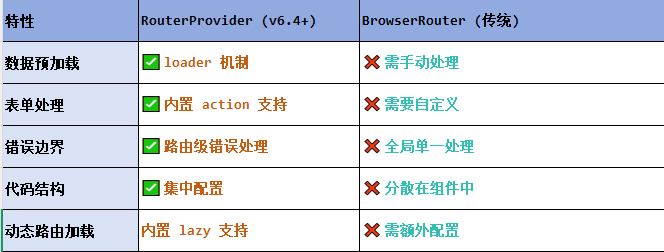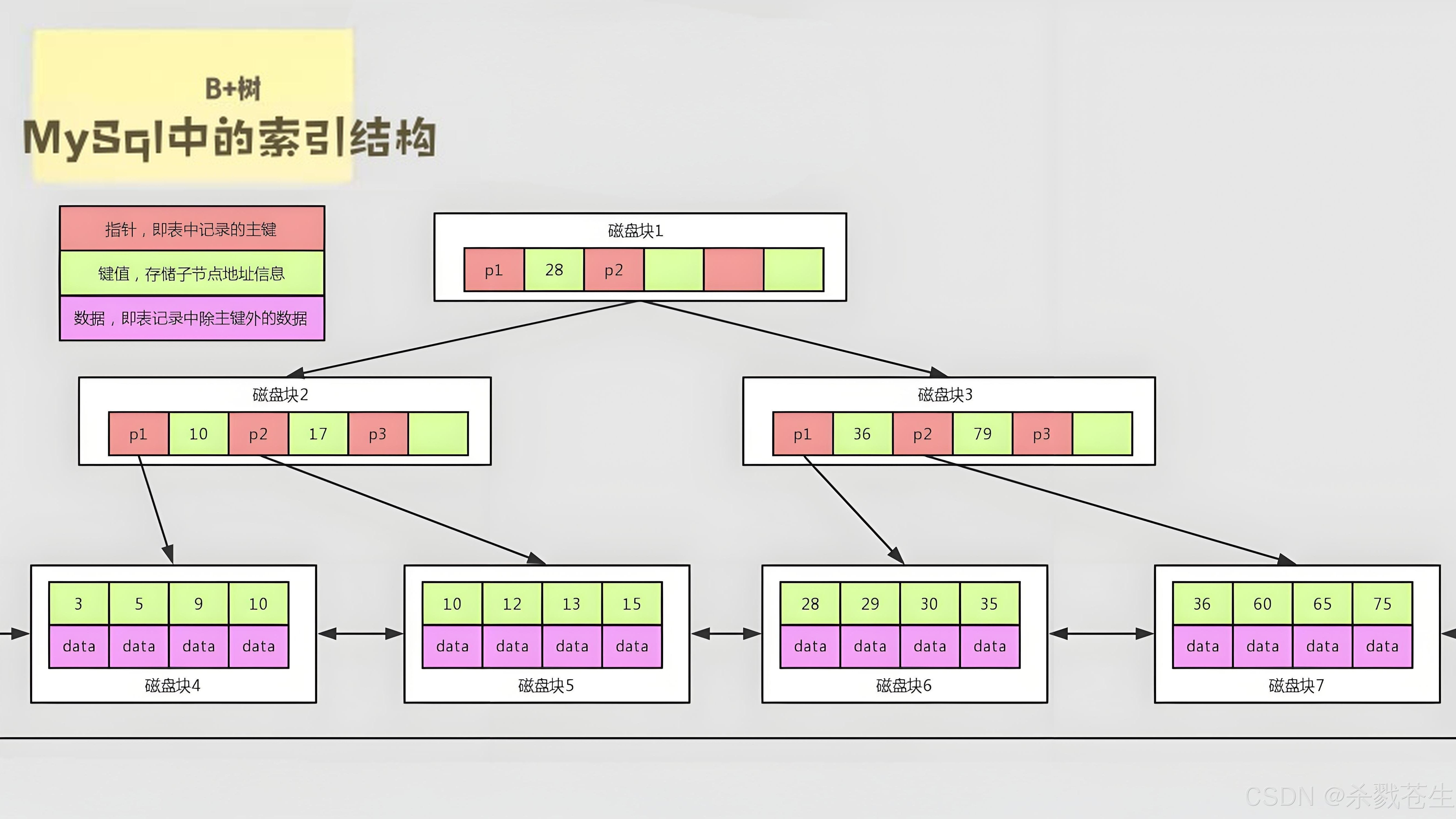AI大模型语音识别转文字
提取音频
本项目作用在于将常见的会议录音文件、各种语种音频文件进行转录成相应的文字,也可从特定视频中提取对应音频进行转录成文字保存在本地。最原始的从所给网址下载对应视频和音频进行处理。下载ffmpeg(https://www.gyan.dev/ffmpeg/builds/packages/ffmpeg-7.1-full_build.7z)并配置好环境变量(path.append(.\bin)),eg:
import os
import yt_dlp # 支持腾讯视频,小红书,tiktok,bilibili,youtube等
from url_cookies import cookies
from moviepy.editor import AudioFileClipdef get_available_formats(url):ydl_opts = {'quiet': True,'extract_flat': True} # 静默模式with yt_dlp.YoutubeDL(ydl_opts) as ydl:info_dict = ydl.extract_info(url, download=False) # info_dict['title']formats = info_dict.get('formats', [])if not formats:print("No available format found!")returnresults = pd.DataFrame(formats).iloc[:,:].groupby('ext').apply(lambda x: x.tail(1)).reset_index(drop=True)return results,info_dict['title']def get_downloaded_filename(d):if d['status'] == 'processing': # callback function to capture the downloaded file name informationprint(f"download filename:{d['filename']}")def download_video(url):get_best_id,filename = get_available_formats(url)id = (str(get_best_id[get_best_id['ext']=='mp4']['format_id'].values[0]) if len(get_best_id[get_best_id['ext']=='mp4'])>0 else '')+ \'+'+(str(get_best_id[get_best_id['ext']=='m4a']['format_id'].values[0]) if len(get_best_id[get_best_id['ext']=='m4a'])>0 else '')id = id.split('+')[0] if id.endswith('+') else id.split('+')[1] if id.startswith('+') else idydl_opts = {'quiet': True,'format': id,'outtmpl': '%(title)s.%(ext)s','concurrent-fragments': 10,'cookiefile': None, # 禁用默认的cookie文件'cookies':cookies['cookies_bili'],'progress_hooks': [get_downloaded_filename], # callback function}with yt_dlp.YoutubeDL(ydl_opts) as ydl:ydl.download([url])return filenamedef get_audio(url):file_name = download_video(url)current_directory = os.getcwd()path = current_directory+'\\'+file_name+'.mp4'out_path = current_directory+'\\'+file_name+'.mp3'out_path_wav = current_directory+'\\'+file_name+'.wav'my_audio_clip = AudioFileClip(path.replace('\\','/'))my_audio_clip.write_audiofile(out_path.replace('\\','/'))my_audio_clip.write_audiofile(out_path_wav.replace('\\','/'))if __name__ == "__main__":video_url = 'https://www.youtube.com/watch?v=eA0lHNZ1KCA'get_audio(video_url)
音频切割
对于比较长的音频,需要运行很长时间,特别大的音频可能无法导入,可以利用pydub将音频分块处理:
from pydub import AudioSegment
song = AudioSegment.from_mp3("ROSÉ - toxic till the end (OFFICIAL MUSIC VIDEO).mp3")
t_minutes = 2 * 60 * 1000 # PyDub handles time in milliseconds
first_5_minutes = song[:t_minutes] # 前2分钟输出成单独的mp3文件
first_5_minutes.export("ROSÉ - toxic till the end (OFFICIAL MUSIC VIDEO)_2min.mp3", format="mp3")模型准备
Whisper 是一种自动语音识别 (ASR) 系统,根据从 Web 收集的 680,000 小时的多语言和多任务监督数据进行训练。使用如此庞大且多样化的数据集可以提高对口音、背景噪声和技术语言的鲁棒性。此外,它还支持多种语言的转录,以及从这些语言翻译成英语。 whisper的好处是开源免费、支持多语种(包括中文),有不同模型可供选择,最终的效果比市面上很多音频转文字的效果好。是一个典型的transformer Encoder-Decoder结构,针对语音和文本分别进行多任务(Multitask)处理。其原理介绍在(extension://ngbkcglbmlglgldjfcnhaijeecaccgfi/https://arxiv.org/pdf/2212.04356)这篇论文中。
架构:

Whisper 架构是一种简单的端到端方法,实现为编码器-解码器 Transformer。输入音频被分割成 30 秒的块,转换为 log-Mel 频谱图,然后传递到编码器中。解码器经过训练以预测相应的文本标题,并与特殊标记混合在一起,这些标记指示单个模型执行语言识别、短语级时间戳、多语言语音转录和到英语语音翻译等任务。


Transformer 序列到序列模型针对各种语音处理任务进行训练,包括多语言语音识别、语音翻译、口语识别和语音活动检测。这些任务共同表示为解码器要预测的令牌序列,从而允许单个模型替换传统语音处理管道的许多阶段。多任务训练格式使用一组特殊标记,用作任务说明符或分类目标。 whisper目前有5个模型,随着参数的变多,转文字的理解性和准确性会提高,但相应速度会变慢:

Whisper 的音频数据集中约有三分之一是非英语的,它交替被赋予了以原始语言转录或翻译成英语的任务。这种方法在学习语音到文本翻译方面特别有效,并且优于 CoVoST2 到英语翻译零样本的监督 SOTA。
安装whisper:
cmd>>pip install -U openai-whisper # 最新版本的 Whisper
cmd>>pip install git+https://github.com/openai/whisper.git # 最新依赖项如果安装成功,在cmd中输入whisper可以得到以下输出:

安装chocolatey(Chocolatey Software | Installing Chocolatey),安装chocolatey是为了后面方便在Windows中安装ffmpeg,输入以下命令:
powershell>>Set-ExecutionPolicy Bypass -Scope Process -Force; [System.Net.ServicePointManager]::SecurityProtocol = [System.Net.ServicePointManager]::SecurityProtocol -bor 3072; iex ((New-Object System.Net.WebClient).DownloadString('https://community.chocolatey.org/install.ps1'))
powershell>>choco install ffmpeg
cmd>> pip install setuptools-rust # 可选项,如果没有构建轮子

可以在命令行中直接使用whisper,第一次调用模型时需要下载。模型导入后会逐步生成文字。例如导入audio音频,利用medium模型进行转录,模型会自动检测出语言是英语,然后根据断句和语气,生成每句话的文字。中途可以随时中断。
whisper audio.mp3 --model mediumwhisper其他参数,可以参考帮助:所有可用语言的列表可以参阅 tokenizer.py。
whisper --help也可以在python中调用:
import whisper
model = whisper.load_model("base")
result = model.transcribe("audio.mp3",,fp16="False") # 输出音频转录文字
print(result["text"]) # 将结果储存在变量中音频识别
为了追求转录速度和精确度,将基于c++的Whisper 在linux中实现转录目标,进入python3.8虚拟环境:

安装依赖:
sudo apt update
sudo apt install cmake g++ wget ffmpeg nilfs-tools
git clone https://github.com/ggerganov/whisper.cpp.git # open VPN
cd whisper.cpp
下载其中任意一个whisper模型转换成 ggml格式,如:
sh ./models/download-ggml-model.sh base
具体可选模型可参考:ggerganov/whisper.cpp at main,根据需要下载对应模型,模型越大所推理的时间越长,但是精度越好,鲁棒性越大,反之同理。
如果下载较慢可选择手动下载上传到linux目录,创建实例:
# build the project
cmake -B build
cmake --build build --config Release完成后将会出现以下文件夹:
![]()
发现虚拟机无法联网导致无法下载文件,修改配置(本机基于WSL2配置的ubuntu,未使用VM或者clash for windows等代理软件):
sudo lshw -c Network # 检查网络状况:disabled
ls /etc/NetworkManager/conf.d/
sudo touch /etc/NetworkManager/conf.d/10-globally-managed-devices.conf
sudo systemctl restart NetworkManager问题解决后ping一下baidu.com:

问题已解决,若运行文件仍然出现问题,可能是未刷新,退出虚拟机重新进入即可。
转录文字
基于linux下python脚本运行,输入为文件mp3路径或者对应网址附加语种,在Linux下下暂不支持代理VPN连接外站视频:
import os
import subprocess
import pandas as pd
import yt_dlp # 支持腾讯视频,小红书,tiktok,bilibili,youtube等
from url_cookies import cookies
from moviepy.editor import AudioFileClipclass audio_to_content:def __init__(self, video_url, ln = 'auto', model = 'ggml-base.bin'):if video_url.endswith('zh'):self.url = video_url[:-3]self.l = 'zh'elif video_url.endswith('en'):self.url = video_url[:-3]self.l = 'en'else:self.url = video_urlself.l = lnself.model = modelself.curr_path = os.getcwd().replace('\\','/')def get_available_formats(self, url):ydl_opts = {'quiet': True,'extract_flat': True} # 静默模式with yt_dlp.YoutubeDL(ydl_opts) as ydl:info_dict = ydl.extract_info(url, download=False) # info_dict['title']formats = info_dict.get('formats', [])if not formats:print("No available format found!")returnresults = pd.DataFrame(formats).iloc[:,:].groupby('ext').apply(lambda x: x.tail(1)).reset_index(drop=True)return results,info_dict['title']def get_downloaded_filename(self, d):if d['status'] == 'processing': # callback function to capture the downloaded file name informationprint(f"download filename:{d['filename']}")def download_video(self, url):get_best_id,filename = self.get_available_formats(url)id = (str(get_best_id[get_best_id['ext']=='mp4']['format_id'].values[0]) if len(get_best_id[get_best_id['ext']=='mp4'])>0 else '')+ \'+'+(str(get_best_id[get_best_id['ext']=='m4a']['format_id'].values[0]) if len(get_best_id[get_best_id['ext']=='m4a'])>0 else '')id = id.split('+')[0] if id.endswith('+') else id.split('+')[1] if id.startswith('+') else idydl_opts = {'quiet': True,'format': id,'outtmpl': '%(title)s.%(ext)s','concurrent-fragments': 10,'cookiefile': None, # 禁用默认的cookie文件'cookies':cookies['cookies_bili'],'progress_hooks': [self.get_downloaded_filename]} # callback functionwith yt_dlp.YoutubeDL(ydl_opts) as ydl:ydl.download([url])return filenamedef get_audio(self, url):file_name = self.download_video(url)path = self.curr_path + '/'+file_name+'.mp4'my_audio_clip = AudioFileClip(path)my_audio_clip.write_audiofile(path.replace('mp4','mp3'))return pathdef convert_mp3_to_wav(self, input_file, output_file):if os.path.exists(output_file):os.remove(output_file)command = ['ffmpeg','-i', input_file,'-ar', '16000','-ac', '1','-c:a', 'pcm_s16le',output_file]subprocess.run(command, check=True, stdout=subprocess.DEVNULL, stderr=subprocess.DEVNULL)def run(self):# cli_path = self.curr_path + '/build/bin/whisper-cli'if self.url.startswith('https'):mp4_path = self.get_audio(self.url)self.convert_mp3_to_wav(mp4_path.replace('mp4','mp3'), mp4_path.replace('mp4','wav'))wav_path = mp4_path.replace('mp4','wav')elif self.url.endswith('mp3'):mp3_path = self.curr_path + '/' + self.urlself.convert_mp3_to_wav(mp3_path, mp3_path.replace('mp3','wav'))wav_path = mp3_path.replace('mp3','wav')txt_path = mp3_path.replace('mp3','txt')elif self.url.endswith('aac'):mp3_path = self.curr_path + '/' + self.urlself.convert_mp3_to_wav(mp3_path, mp3_path.replace('aac','wav'))wav_path = mp3_path.replace('aac','wav')txt_path = mp3_path.replace('aac','txt')if self.l == 'zh':model_path = self.curr_path + '/models/' + self.modelelif self.l == 'en':model_path = self.curr_path + '/models/ggml-base.en.bin'try:command = ['whisper-cli','-f', wav_path,'-l', self.l,'-m', model_path]except Exception as e:print('enter language!')result = subprocess.run(command, stdout=subprocess.PIPE, stderr=subprocess.PIPE, text=True)if result:if self.url.startswith('https'):txt_path = mp4_path.replace('mp4','txt')os.remove(mp4_path)os.remove(mp4_path.replace('mp4','mp3'))os.remove(mp4_path.replace('mp4','wav'))else:os.remove(mp3_path)os.remove(wav_path)with open(txt_path, 'w') as file:file.write(result.stdout)print('complete!')if __name__ == "__main__":content = input("enter url or audio_file_path and language:")audio_convert = audio_to_content(content)audio_convert.run()为文件时:

为网址时:

实时转录
依赖于stream实时监听麦克风阵列,可以加入到脚本中,当然可以直接在命令行中执行,这种情况仅支持仅推理模式,流工具每半秒对音频进行一次采样,并连续运行转录:
./build/bin/stream -m ./models/ggml-base.en.bin -t 8 --step 500 --length 5000
在cpu上运行转录一段半小时的音频文件大概需要6分钟左右,但若存在GPU加速该时间能缩短至一半甚至更快。
模型微调
以大模型large_v3为例,首先安装依赖:
pip install transformers datasets huggingface-hub accelerate evaluate tensorboard在安装 pip 依赖库后登入 HuggingFace:
huggingface-cli login登录需要 token. 在上面这条指令中,huggingface-cli 会提供一个网址,获取 API token。如果需要将模型上传到 HuggingFace Hub需要一个拥有 write 权限的 token。
准备数据集
Whisper 是一个监督学习的模型。因此在数据集中,需要提供音频文件以及音频对应的文字。 最简单的数据集准备方法是使用 HuggingFace AudioFolder.建立文件夹,并将文件如下摆放:
folder/train/metadata.jsonl
folder/train/first.mp3
folder/train/second.mp3
folder/train/third.mp3 # 不是所有文件都支持。例如m4a文件就无法使用metadata.jsonl 是一个 JSON Lines 格式的文件,其格式如下:
{"file_name": "first.mp3", "transcription": "First Audio Transcription"}
{"file_name": "second.mp3", "transcription": "Second Audio Transcription"}
{"file_name": "third.mp3", "transcription": "Third Audio Transcription"}JSONL 的意思是 JSON Lines: 每一行是一个 JSON 对象,而整个文件可以被看作是一个数组的 JSON 对象。 在每行中,file_name 的名字必须是 file_name。它提供的是音频文件的相对路径,相对这一个 metadata.jsonl文件。 其他键值(比如transcription)可以任意起名。最后这个文件将会被转成 Arrow 格式的表格(类似 pandas 的 Dataset),而每一个键值对应的表格中的一列。 可以加入任意多的其他键值,可以指明说话人、语言、来源等信息。
数据集准备完成后,使用如下命令将数据集上传至 HuggingFace Hub:
from datasets import load_dataset
audio_dataset = load_dataset("audiofolder", data_dir=".")
audio_dataset.push_to_hub("YOUR_HF_NAME/HF_DATASET_REPO") # Replace this with your Huggingface Repository这将会读取音频文件,将整个数据集转换为 Parquet 格式,自动生成包含数据集信息的 README.md 文件,并上传到 HuggingFace Hub。
微调基于 HuggingFace 版本的 OpenAI Whisper 模型。关于微调的详细过程可以在这里找到:
# 训练过程文件夹: ./whisper-large-v3-ft-train
# 模型输出文件夹: ./whisper-large-v3-finetunedref(APA): metricv.MetricVoid's Blog.https://me.sakana.moe. Retrieved 2024/12/29.
# NOTE: 注意:在此处填入finetune 的基座模型。
base_model = "openai/whisper-large-v3"# NOTE: 此处不要修改。除非你想训练 translate 模式,且你的数据集包含原音频的英文翻译。
task = "transcribe"from datasets import load_dataset, DatasetDict# ========== Load Dataset ==========
tl_dataset = DatasetDict()
tl_dataset["train"] = load_dataset("YOUR_HF_NAME/HF_DATASET_REPO", split="train")
# NOTE: 如果你的数据集包含 test 分区,将下一行取消注释
# tl_dataset["test"] = load_dataset("metricv/tl-whisper", "hi", split="test")# ========== Load Whisper Preprocessor ==========from transformers import WhisperFeatureExtractor
from transformers import WhisperTokenizer
from transformers import WhisperProcessorfeature_extractor = WhisperFeatureExtractor.from_pretrained(base_model)
tokenizer = WhisperTokenizer.from_pretrained(base_model, task=task)
processor = WhisperProcessor.from_pretrained(base_model, task=task)# ========== Process Dataset ==========from datasets import Audiotl_dataset = tl_dataset.cast_column("audio", Audio(sampling_rate=16000))def prepare_dataset(batch):# load and resample audio data from 48 to 16kHzaudio = batch["audio"]# compute log-Mel input features from input audio arraybatch["input_features"] = feature_extractor(audio["array"], sampling_rate=audio["sampling_rate"]).input_features[0]# encode target text to label ids# NOTE: 此处的键值 "transcription" 指的就是你在创建数据集的过程中,包含音频文件对应文字的键值。如果你是用的键名不是 transcription,在此处修改。batch["labels"] = tokenizer(batch["transcription"]).input_idsreturn batchtl_dataset = tl_dataset.map(prepare_dataset, remove_columns=tl_dataset.column_names["train"], num_proc=8)# ========== Load Whisper Model ==========from transformers import WhisperForConditionalGeneration
model = WhisperForConditionalGeneration.from_pretrained(base_model)
model.generation_config.task = task
model.generation_config.forced_decoder_ids = None# ========== Fine-tune model ==========import torch
from dataclasses import dataclass
from typing import Any, Dict, List, Union@dataclass
class DataCollatorSpeechSeq2SeqWithPadding:processor: Anydecoder_start_token_id: intdef __call__(self, features: List[Dict[str, Union[List[int], torch.Tensor]]]) -> Dict[str, torch.Tensor]:# split inputs and labels since they have to be of different lengths and need different padding methods# first treat the audio inputs by simply returning torch tensorsinput_features = [{"input_features": feature["input_features"]} for feature in features]batch = self.processor.feature_extractor.pad(input_features, return_tensors="pt")# get the tokenized label sequenceslabel_features = [{"input_ids": feature["labels"]} for feature in features]# pad the labels to max lengthlabels_batch = self.processor.tokenizer.pad(label_features, return_tensors="pt")# replace padding with -100 to ignore loss correctlylabels = labels_batch["input_ids"].masked_fill(labels_batch.attention_mask.ne(1), -100)# if bos token is appended in previous tokenization step,# cut bos token here as it's append later anywaysif (labels[:, 0] == self.decoder_start_token_id).all().cpu().item():labels = labels[:, 1:]batch["labels"] = labelsreturn batchdata_collator = DataCollatorSpeechSeq2SeqWithPadding(processor=processor,decoder_start_token_id=model.config.decoder_start_token_id,
)import evaluatemetric = evaluate.load("wer")def compute_metrics(pred):pred_ids = pred.predictionslabel_ids = pred.label_ids# replace -100 with the pad_token_idlabel_ids[label_ids == -100] = tokenizer.pad_token_id# we do not want to group tokens when computing the metricspred_str = tokenizer.batch_decode(pred_ids, skip_special_tokens=True)label_str = tokenizer.batch_decode(label_ids, skip_special_tokens=True)wer = 100 * metric.compute(predictions=pred_str, references=label_str)return {"wer": wer}from transformers import Seq2SeqTrainer, Seq2SeqTrainingArgumentstraining_args = Seq2SeqTrainingArguments(output_dir="./whisper-large-v3-ft-train", # change to a repo name of your choiceper_device_train_batch_size=4,gradient_accumulation_steps=4, # increase by 2x for every 2x decrease in batch sizelearning_rate=1e-5,num_train_epochs=2.0,# warmup_steps=500,# max_steps=4000,gradient_checkpointing=True,fp16=True,do_eval=False,# eval_strategy="steps", # NOTE: 如果你的数据集包含 test 分区,可取消注释此行per_device_eval_batch_size=8,predict_with_generate=True,generation_max_length=225,# save_steps=1000,# eval_steps=1000,logging_steps=5,report_to=["tensorboard"],load_best_model_at_end=False,metric_for_best_model="wer",greater_is_better=False,push_to_hub=False,
)trainer = Seq2SeqTrainer(args=training_args,model=model,train_dataset=tl_dataset["train"],# eval_dataset=tl_dataset["test"], # NOTE: 如果你的数据集包含 test 分区,可取消注释此行data_collator=data_collator,compute_metrics=compute_metrics,tokenizer=processor.feature_extractor,
)processor.save_pretrained(training_args.output_dir)trainer.train()# ========== Save model ==========trainer.save_model(output_dir="./whisper-large-v3-finetuned")
torch.save(model.state_dict(), f"{training_args.output_dir}/pytorch_model.bin")# ========== Push model to HF hub ==========
# 如果你不想上传模型,注释掉以下行。
trainer.push_to_hub("YOUR_HF_NAME/HF_MODEL_REPO") # 修改为你的 HuggingFace 仓库名在部署微调后的模型前还需要设置一些东西:
基座模型的 tokenizer.json 可能没有被复制过来。你需要手动复制一下。
在 HuggingFace Hub上找到基座模型 (such as openai/whisper-large-v3), 下载它的 tokenizer.json,并放到“模型输出文件夹”下。 如果你使用了 push_to_hub() 来上传模型,但是上传后的模型没有 tokenizer.json,你可以使用 HuggingFace 的网页界面手动上传。
如果“模型输出文件夹”中没有 tokenizer_config.json,将“训练过程文件夹”的对应文件复制过来。
如果“模型输出文件夹”中没有 preprocessor_config.json,将“训练过程文件夹”的对应文件复制过来。
微调后的模型可以用多种方式部署:
1、使用 HuggingFace 运行库
微调后的模型和原版 HuggingFace 模型一样,可以使用 from_pretrained() 来部署。此方法略快于原版 openai-whisper 包,但会占用更多 RAM。
from transformers import WhisperForConditionalGeneration, WhisperProcessorprocessor = WhisperProcessor.from_pretrained("YOUR_HF_NAME/HF_MODEL_REPO") # 如果你没有上传模型,使用 from_pretrained("模型输出文件夹") 加载本地模型。2、使用原版 PyPI 的 openai-whisper 包
微调后的模型可被转换为兼容原版 openai-whisper 包的格式。 在微调的结尾,把 PyTorch 格式的模型保存在了 "训练过程文件夹"/pytorch_model.bin. 但是,这个模型中的层和原版模型的命名方式不一样。重命名即可解决该问题。 使用以下代码转换:
# NOTE: Change this to the base model you fine-tuned from.
BASE_MODEL = "large-v3"#!/bin/env python3
import whisper
import re
import torchdef hf_to_whisper_states(text):text = re.sub('.layers.', '.blocks.', text)text = re.sub('.self_attn.', '.attn.', text)text = re.sub('.q_proj.', '.query.', text)text = re.sub('.k_proj.', '.key.', text)text = re.sub('.v_proj.', '.value.', text)text = re.sub('.out_proj.', '.out.', text)text = re.sub('.fc1.', '.mlp.0.', text)text = re.sub('.fc2.', '.mlp.2.', text)text = re.sub('.fc3.', '.mlp.3.', text)text = re.sub('.fc3.', '.mlp.3.', text)text = re.sub('.encoder_attn.', '.cross_attn.', text)text = re.sub('.cross_attn.ln.', '.cross_attn_ln.', text)text = re.sub('.embed_positions.weight', '.positional_embedding', text)text = re.sub('.embed_tokens.', '.token_embedding.', text)text = re.sub('model.', '', text)text = re.sub('attn.layer_norm.', 'attn_ln.', text)text = re.sub('.final_layer_norm.', '.mlp_ln.', text)text = re.sub('encoder.layer_norm.', 'encoder.ln_post.', text)text = re.sub('decoder.layer_norm.', 'decoder.ln.', text)text = re.sub('proj_out.weight', 'decoder.token_embedding.weight', text)return text# Load HF Model
# NOTE: Change the following line to point to "Training Data Directory"/pytorch_model.bin
hf_state_dict = torch.load("Training Data Directory/pytorch_model.bin", map_location=torch.device('cpu'))# Rename layers
for key in list(hf_state_dict.keys())[:]:new_key = hf_to_whisper_states(key)hf_state_dict[new_key] = hf_state_dict.pop(key)model = whisper.load_model(BASE_MODEL)
dims = model.dims# Save it
# NOTE: This will save file to whisper-model.bin. Change the path as you wish.
torch.save({"dims": model.dims.__dict__,"model_state_dict": hf_state_dict
}, "whisper-model.bin")然后,你就可以使用原版的 whisper.load("whisper-model.bin") 来加载模型。
3、Faster-Whisper (CTranslate 2)
最有效率的部署方式是使用 faster-whisper 运行库,但需要再转换一次格式。 首先,安装faster-whisper的转换器:
git clone --depth=1 https://github.com/SYSTRAN/faster-whisper
cd faster-whisper
pip install -e .[convert] # In zsh, quote ".[convert]"然后使用以下命令进行转换
ct2-transformers-converter \--model YOUR_HF_NAME/HF_MODEL_REPO \--output_dir whisper-largve-v3-ft-ct2-f16 \--copy_files tokenizer.json preprocessor_config.json \--quantization float16
CTranslate2 模型会保存到一个文件夹,而并不是单一文件。将 whisper-largve-v3-ft-ct2-f16 改为目标文件夹。 Quantization 不是必要的。训练时使用的就是f16,所以此处的 quantization 其实并没做任何量化。
然后,微调后的模型就可以像任何其他模型一样,被 faster-whisper 加载:
from faster_whisper import WhisperModelmodel = WhisperModel("/path/to/model/directory", device="cuda", compute_type="float16")制作GUI界面交互(demo)
测试安装以下 Python 库:
Flask: 用于构建 Web 服务。google-cloud-speech: 用于调用 Google Cloud Speech-to-Text API。werkzeug: 用于处理文件上传
pip install Flask google-cloud-speech werkzeug
设置 Google Cloud API 的认证。可以在 Google Cloud Console 创建项目并启用 Speech-to-Text API,下载服务账号的 JSON 密钥文件,并设置环境变量 GOOGLE_APPLICATION_CREDENTIALS:
export GOOGLE_APPLICATION_CREDENTIALS="path_to_your_service_account_file.json"
function:
- 文件上传:前端通过
POST请求将音频文件发送到/upload路由,后端接收文件并保存到服务器本地。 - 转录音频:文件上传后,
transcribe_audio函数会调用 Google Cloud Speech-to-Text API 来转录音频文件。 - 返回转录结果:转录完成后,后端将转录文本以 JSON 格式返回给前端。
from flask import Flask, request, jsonify
from google.cloud import speech
import os
from werkzeug.utils import secure_filename# 初始化 Flask 应用
app = Flask(__name__)# 配置上传文件的限制
app.config['UPLOAD_FOLDER'] = 'uploads/'
app.config['ALLOWED_EXTENSIONS'] = {'wav', 'mp3', 'flac'}# 检查文件类型
def allowed_file(filename):return '.' in filename and filename.rsplit('.', 1)[1].lower() in app.config['ALLOWED_EXTENSIONS']# 创建上传目录(如果不存在)
if not os.path.exists(app.config['UPLOAD_FOLDER']):os.makedirs(app.config['UPLOAD_FOLDER'])# 语音转文本函数
def transcribe_audio(file_path):client = speech.SpeechClient()# 读取音频文件with open(file_path, "rb") as audio_file:content = audio_file.read()# 音频配置audio = speech.RecognitionAudio(content=content)config = speech.RecognitionConfig(encoding=speech.RecognitionConfig.AudioEncoding.LINEAR16,sample_rate_hertz=16000,language_code="en-US",)# 调用 Google Cloud Speech API 转录response = client.recognize(config=config, audio=audio)# 提取转录文本transcription = ""for result in response.results:transcription += result.alternatives[0].transcriptreturn transcription# 上传并转录音频文件的路由
@app.route('/upload', methods=['POST'])
def upload_file():if 'file' not in request.files:return jsonify({"error": "No file part"}), 400file = request.files['file']if file.filename == '':return jsonify({"error": "No selected file"}), 400if file and allowed_file(file.filename):filename = secure_filename(file.filename)file_path = os.path.join(app.config['UPLOAD_FOLDER'], filename)file.save(file_path)# 转录音频文件try:transcription = transcribe_audio(file_path)return jsonify({"transcription": transcription})except Exception as e:return jsonify({"error": f"Error transcribing audio: {str(e)}"}), 500else:return jsonify({"error": "Invalid file type"}), 400if __name__ == '__main__':app.run(debug=True)
运行服务:
启动 Flask 后端服务:
python app.py打开浏览器,访问 http://127.0.0.1:5000,选择一个音频文件并上传,服务将返回转录的文本。
相关文章:

AI大模型语音识别转文字
提取音频 本项目作用在于将常见的会议录音文件、各种语种音频文件进行转录成相应的文字,也可从特定视频中提取对应音频进行转录成文字保存在本地。最原始的从所给网址下载对应视频和音频进行处理。下载ffmpeg(https://www.gyan.dev/ffmpeg/builds/packages/ffmpeg-…...
 单片机直接驱动的模块)
可由 (5V) 单片机直接驱动的模块
可由 (5V) 单片机 直接驱动的模块 1. 传感器类 元器件描述温度传感器DS18B20(数字温度传感器)光强传感器光敏电阻(通过 ADC 读取)红外传感器红外接收模块(如 VS1838)超声波传感器HC…...

vue使用树形结构展示文件和文件夹
1. 树形结构显示 显示文件夹和文件:使用 el-tree 组件展示树形结构,文件夹和文件的图标通过 el-icon 进行动态显示。文件夹使用 Folder 图标,文件使用 Files 图标。节点点击:点击树形节点后,会将选中的节点保存到 sel…...

PHP框架+gatewayworker实现在线1对1聊天--聊天界面布局+创建websocket连接(5)
文章目录 聊天界面布局html代码 创建websocket连接为什么要绑定? 聊天界面布局 在View/Index目录下创建index.html html代码 <div id"chat"><div id"nbar"><div class"pull-left">与牛德胜正在聊天...</div…...

LinuxUbuntu打开VSCode白屏解决方案
解决方法是 以root权限打开VSCode sudo /usr/share/code/code --no-sandbox --unity-launch...

在 ESP 上运行 AWTK
AWTK 基于 esp 的移植。 测试硬件平台为 ESP32-S3-Touch-LCD-4.3,其它平台请根据实际平台自行调整。 安装下载工具 建议下载离线版本 ESP IDF v5.3.2 下载代码 git clone https://github.com/zlgopen/awtk-esp.git cd awtk-esp git clone https://github.com/zlg…...

硬件工程师面试题 21-30
把常见的硬件面试题进行总结,方便及时巩固复习。其中包括网络上的资源、大佬们的大厂面试题,其中可能会题目类似,加强印象即可。 更多硬件面试题:硬件工程师面试题 1-10硬件工程师面试题 11-20 21、单片机最小系统需要什么&#x…...

开源架构的容器化部署优化版
上三篇文章推荐: 开源架构的微服务架构实践优化版(New) 开源架构中的数据库选择优化版(New) 开源架构学习指南:文档与资源的智慧锦囊(New) 我管理的社区推荐:【青云交社区…...

Qt使用CMake编译项目时报错:#undefined reference to `vtable for MainView‘
博主将.h文件和.cpp文件放到了不同的文件目录下面,如下图所示: 于是构建项目的时候就报错了#undefined reference to vtable for MainView,这个是由于src/view目录下的CMake无法自动moc头文件导致的,需要手动moc include/view目录…...

python学习笔记—12—
1. 布尔类型 (1) 定义 (2) 比较运算符 (3) 代码演示 1. 手动定义 bool_1 True bool_2 False print(f"bool_1的内容是:{bool_1}, 类型是:{type(bool_1)}") print(f"bool_2的内容是:{bool_2}, 类型是:{type(bool…...

==和===的区别,被坑的一天
在 JavaScript 中, 和 都用于比较两个值,但它们有一个重要的区别: 1. (宽松相等运算符) 进行比较时,会 自动类型转换(也叫做强制类型转换),即如果比较的两个值的类型不同,JavaScr…...

基于 GPUTasker 的 GPU 使用情况钉钉推送机器人实现
引言 https://github.com/cnstark/gputasker 随着 AI 模型的广泛应用,GPU 成为团队中最重要的资源之一。然而,如何实时监控 GPU 的使用情况并及时通知团队是一个值得关注的问题。为了更好地管理显卡资源,本文基于 GPUTasker,实现了…...
)
Python自学 - 函数初步(内置函数、模块函数、自定义函数)
1 Python自学 - 函数初步(内置函数、模块函数、自定义函数) 1.1 内置函数 几乎所有的编程都会提供一些内置函数,以便完成一些最基本的任务,Python提供了丰富的内置函数,熟悉内置函数可以给工作带来极大便利。 Python官方的内置函数介绍网…...

【生活】冬天如何选口罩(医用口罩,N95, KN95还是KP95?带不带呼吸阀门?带不带活性炭?)
💡总结一下就是: 日常防护的话,医用口罩就可以啦。要是想长时间佩戴N95(KN95)口罩的话也可以. 在高风险环境(像医院、疫情防控期间),一定要选不带呼吸阀门的N95口罩KN95)…...

HTML5新特性|01 音频视频
音频 1、Audio (音频) HTML5提供了播放音频文件的标准 2、control(控制器) control 属性供添加播放、暂停和音量控件 3、标签: <audio> 定义声音 <source> 规定多媒体资源,可以是多个<!DOCTYPE html> <html lang"en"> <head><…...

迅为RK3568开发板编译Android12源码包-设置屏幕配置
在源码编译之前首先要确定自己想要使用的屏幕并修改源码,在编译镜像,烧写镜像。如下图所示: 第一步:确定要使用的屏幕种类,屏幕种类选择如下所示: iTOP-3568 开发板支持以下种类屏幕: 迅为 LV…...

力扣hot100——图论
200. 岛屿数量 class Solution { public:int numIslands(vector<vector<char>>& grid) {int ans 0;vector<int> dx { 0, 1, 0, -1 };vector<int> dy { 1, 0, -1, 0 };int n grid.size(), m grid[0].size();vector<vector<int>> …...

Docker- Unable to find image “hello-world“locally
Docker- Unable to find image “hello-world“locally 文章目录 Docker- Unable to find image “hello-world“locally问题描述一. 切换镜像1. 编辑镜像源2. 切换镜像内容 二、 检查设置1、 重启dockers2、 检查配置是否生效3. Docker镜像源检查4. Dokcer执行测试 三、自定义…...

spring-boot启动源码分析(二)之SpringApplicationRunListener
在上一篇《spring-boot启动源码分析(一)之SpringApplication实例构造》后,继续看了一个月的Spring boot启动源码,初步把流程看完了,接下来会不断输出总结,以巩固这段时间的学习。同时也希望能帮到同样感兴趣…...

ELK入门教程(超详细)
什么是ELK? ELK是Elasticsearch、Logstash、Kibana三大开源框架首字母大写简称(后来出现的filebeat属于beats家族中的一员,可以用来替代logstash的数据收集功能,比较轻量级),也被称为Elastic Stack。 Filebeat Filebeat是用于转…...

模型参数、模型存储精度、参数与显存
模型参数量衡量单位 M:百万(Million) B:十亿(Billion) 1 B 1000 M 1B 1000M 1B1000M 参数存储精度 模型参数是固定的,但是一个参数所表示多少字节不一定,需要看这个参数以什么…...

React第五十七节 Router中RouterProvider使用详解及注意事项
前言 在 React Router v6.4 中,RouterProvider 是一个核心组件,用于提供基于数据路由(data routers)的新型路由方案。 它替代了传统的 <BrowserRouter>,支持更强大的数据加载和操作功能(如 loader 和…...

Opencv中的addweighted函数
一.addweighted函数作用 addweighted()是OpenCV库中用于图像处理的函数,主要功能是将两个输入图像(尺寸和类型相同)按照指定的权重进行加权叠加(图像融合),并添加一个标量值&#x…...

JVM垃圾回收机制全解析
Java虚拟机(JVM)中的垃圾收集器(Garbage Collector,简称GC)是用于自动管理内存的机制。它负责识别和清除不再被程序使用的对象,从而释放内存空间,避免内存泄漏和内存溢出等问题。垃圾收集器在Ja…...

对WWDC 2025 Keynote 内容的预测
借助我们以往对苹果公司发展路径的深入研究经验,以及大语言模型的分析能力,我们系统梳理了多年来苹果 WWDC 主题演讲的规律。在 WWDC 2025 即将揭幕之际,我们让 ChatGPT 对今年的 Keynote 内容进行了一个初步预测,聊作存档。等到明…...

【Web 进阶篇】优雅的接口设计:统一响应、全局异常处理与参数校验
系列回顾: 在上一篇中,我们成功地为应用集成了数据库,并使用 Spring Data JPA 实现了基本的 CRUD API。我们的应用现在能“记忆”数据了!但是,如果你仔细审视那些 API,会发现它们还很“粗糙”:有…...

从零实现STL哈希容器:unordered_map/unordered_set封装详解
本篇文章是对C学习的STL哈希容器自主实现部分的学习分享 希望也能为你带来些帮助~ 那咱们废话不多说,直接开始吧! 一、源码结构分析 1. SGISTL30实现剖析 // hash_set核心结构 template <class Value, class HashFcn, ...> class hash_set {ty…...

ElasticSearch搜索引擎之倒排索引及其底层算法
文章目录 一、搜索引擎1、什么是搜索引擎?2、搜索引擎的分类3、常用的搜索引擎4、搜索引擎的特点二、倒排索引1、简介2、为什么倒排索引不用B+树1.创建时间长,文件大。2.其次,树深,IO次数可怕。3.索引可能会失效。4.精准度差。三. 倒排索引四、算法1、Term Index的算法2、 …...
)
WEB3全栈开发——面试专业技能点P2智能合约开发(Solidity)
一、Solidity合约开发 下面是 Solidity 合约开发 的概念、代码示例及讲解,适合用作学习或写简历项目背景说明。 🧠 一、概念简介:Solidity 合约开发 Solidity 是一种专门为 以太坊(Ethereum)平台编写智能合约的高级编…...

A2A JS SDK 完整教程:快速入门指南
目录 什么是 A2A JS SDK?A2A JS 安装与设置A2A JS 核心概念创建你的第一个 A2A JS 代理A2A JS 服务端开发A2A JS 客户端使用A2A JS 高级特性A2A JS 最佳实践A2A JS 故障排除 什么是 A2A JS SDK? A2A JS SDK 是一个专为 JavaScript/TypeScript 开发者设计的强大库ÿ…...
